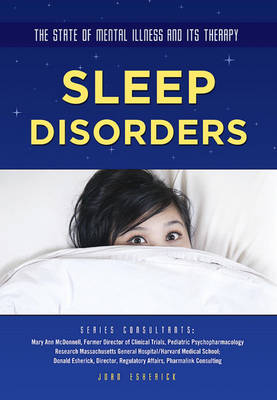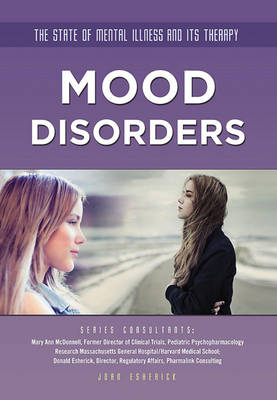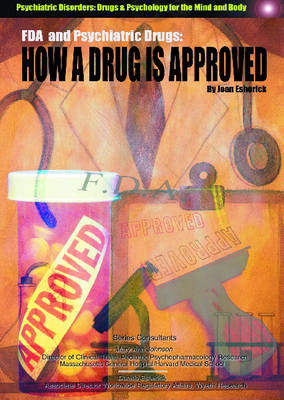The State of Mental Illness and Its Ther
3 total works
You've been doing it since birth. You will do it till you die. You spend a full third of your life doing it. So why is it so hard sometimes? Sleeping seems like it should be the easiest thing in the world. Lie back, close your eyes, and drift off to dream land! But for some people, sleep is anything but easy. For a growing segment of our population, sleep difficulties are becoming routine. In a recent survey done by the National Sleep Foundation, nearly 50 percent of Americans age eighteen or older reported that they are excessively tired during the day, presumably from lack of sleep at night. Teens are no exception: Nearly one out of three falls asleep in class once a week. We know we're chronically fatigued—but why are we so tired? Lifestyle issues, sleep habits, health conditions, medicines, drug abuse, stress—these can certainly rob us of sleep, but perhaps the greatest unrecognized source of our tiredness is a group of conditions called sleep disorders. Often undiagnosed, sleep disorders can seriously compromise the health and lives of those who wrestle with them. What are sleep disorders, and how can they be treated? What are their effects, and how does a person know if she has one? Using numerous case studies combined with easy-to-understand information, Sleep Disorders takes a comprehensive look at the causes and symptoms of sleep disorders, methods of diagnosis and treatment, specific drugs used in treatment, and alternative strategies for management. By examining the causes and cures of these sleep robbers, readers will discover that, contrary to popular belief, it is possible to get a good night's sleep in our bustling world.
Everyone experiences the "blues" now and then as well as times of joy and self-confidence. Most people even experience mood swings—times when they move quickly from feelings like joy to opposite feelings like sorrow. But what happens when normal moods become so extreme that a person can't think, feel, or act appropriately? What if a person is so "up" he does foolish, even dangerous, things? What if he's so "down" he can barely get out of bed? The U.S. Surgeon General reports that, at any one time, between 10 and 15 percent of the adolescent population in the United States suffers from major depression. That's one in ten teens! According to the National Institute of Mental Health, 20 to 40 percent of those will develop bipolar disorder (manic depression) within five years. Often undiagnosed or misdiagnosed, mood disorders present major challenges, such as increased risk for illness, higher probability of social and interpersonal problems, and greater likelihood of substance abuse for those who suffer with them. Mood disorders, when left untreated, can even be fatal: seven percent of adolescents with major depressive disorder commit suicide. What are mood disorders, and how can they be treated? Using numerous case studies and sidebars, and written in language that is easy to understand, Mood Disorders takes a comprehensive look at the causes and symptoms of mood disorders. In its pages, you will learn about the methods for diagnosis and treatment, specific drugs used to treat mood disorders, and alternative treatment strategies. Along the way, you will discover that mood disorders, though serious and challenging, are treatable, and help can be found.
Imagine taking a medication meant to heal you only to discover that the drug rotted your bones, made your teeth fall out, and filled you with a radioactive element called radium. Pittsburgh industrialist Eben Byers didn't have to imagine. It happened to him, and he died as a result. Mr. Byers fell victim to "patent medicines" sold in the early twentieth century. Patent medicine quackery and other medical tragedies prompted the United States government to form an agency that could protect patients and consumers from mislabeled or dangerous medicines, cosmetics, and foods. That agency is the U.S. Food and Drug Administration (FDA). Most drugs and medical treatments sold in North America today, including drugs used to treat psychological disorders, are regulated by this consumer protection agency. Many people diagnosed with depression, panic attacks, schizophrenia, ADHD, and other psychological disorders lead normal lives because they are treated with psychiatric drugs approved by the FDA. But what are psychiatric drugs? Where do they come from? How do they work? What does it take for the FDA to approve them? Why do we have the FDA? Perhaps most important, does FDA approval guarantee safety? Loaded with case studies and user-friendly illustrations, this readable text answers these and other questions as it examines a brief history of mental disorders and their treatment. In its pages, you will learn about the origins of the FDA, the FDA drug approval process, the structure and chemistry of the brain, psychiatric drugs and how they work, adverse reactions, and alternative treatments. Come learn about the drug approval process. Next time you reach into your medicine cabinet, you'll be glad you did.


